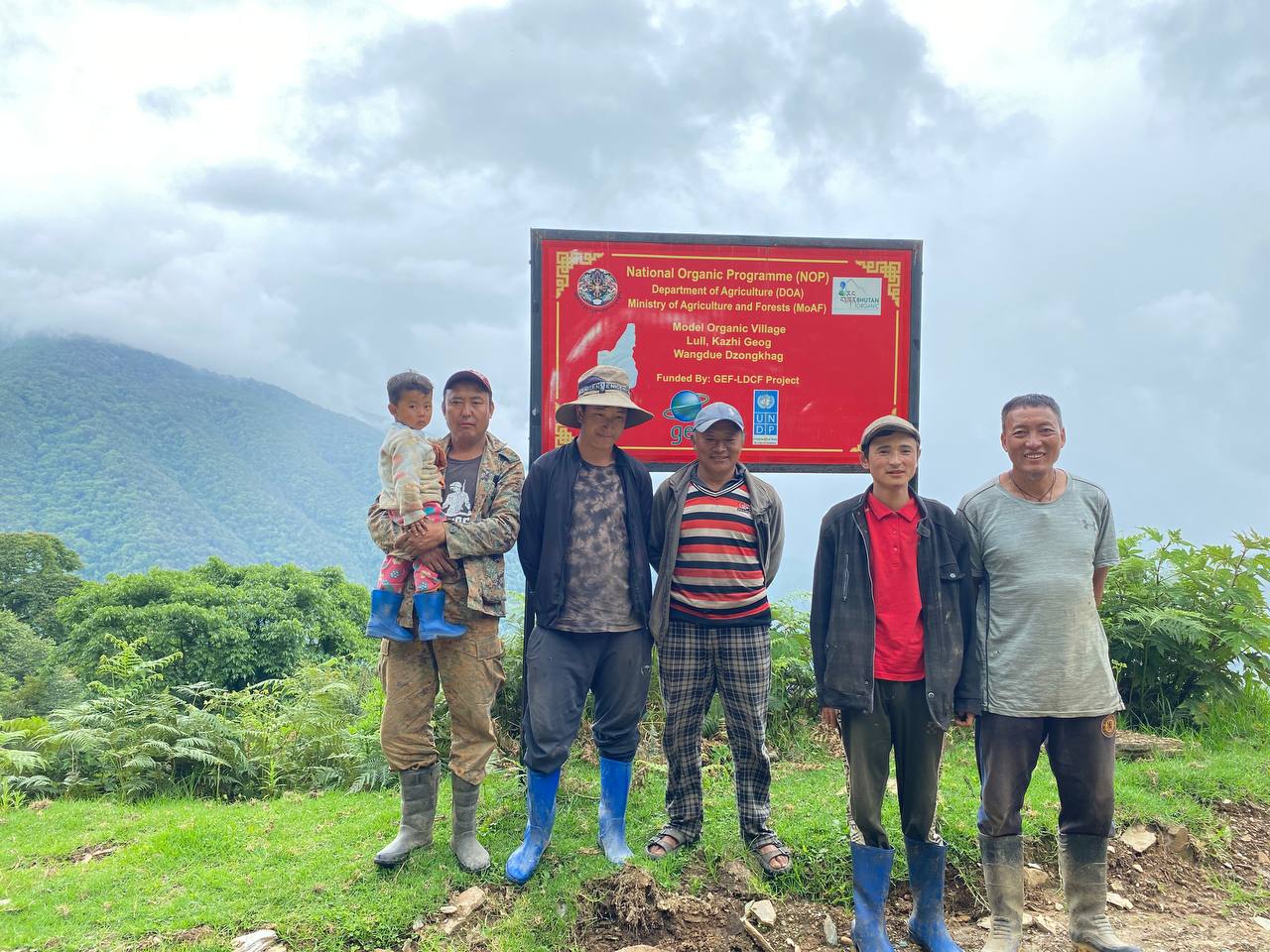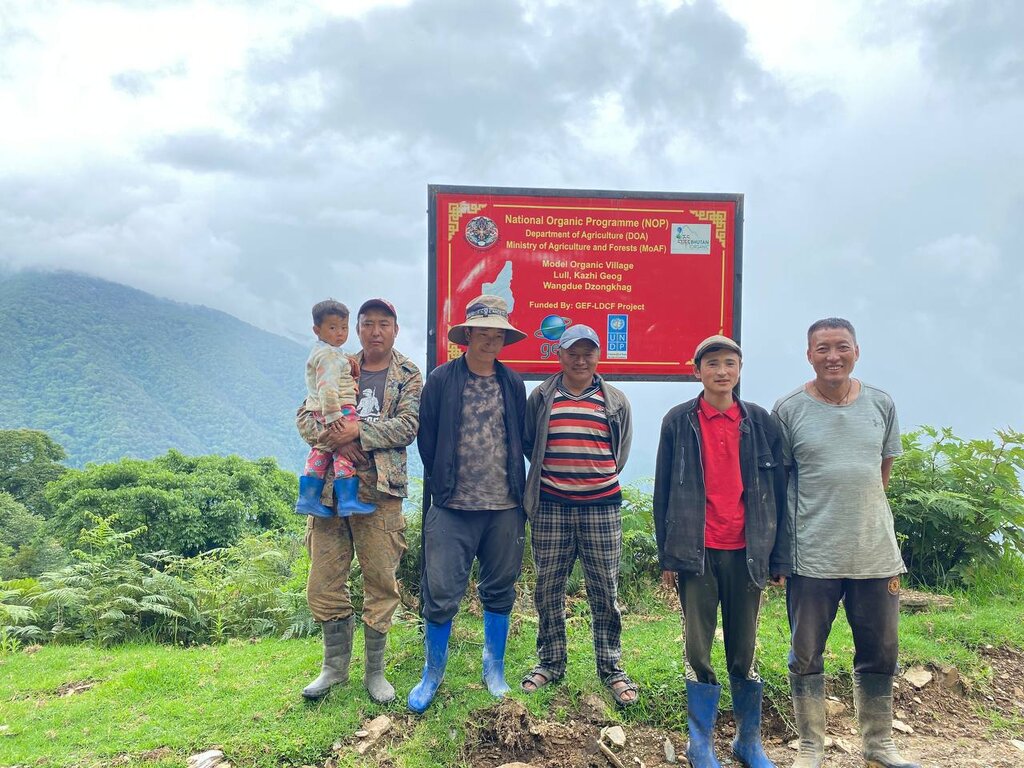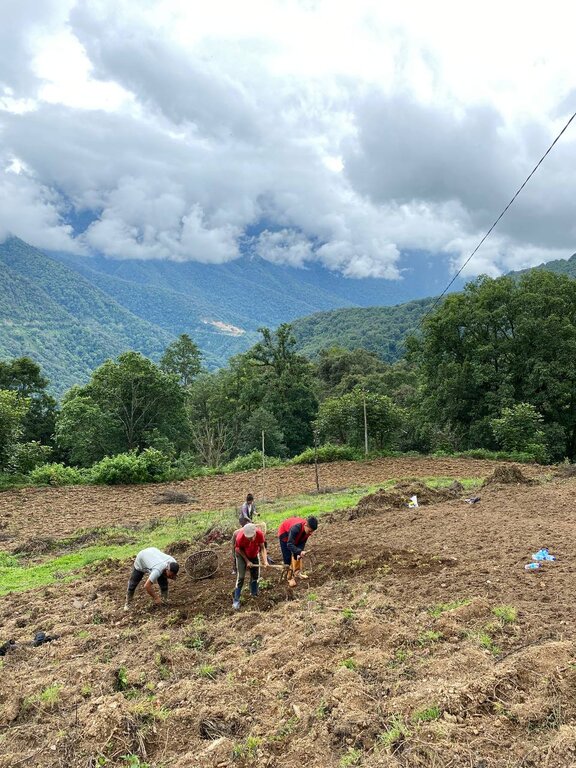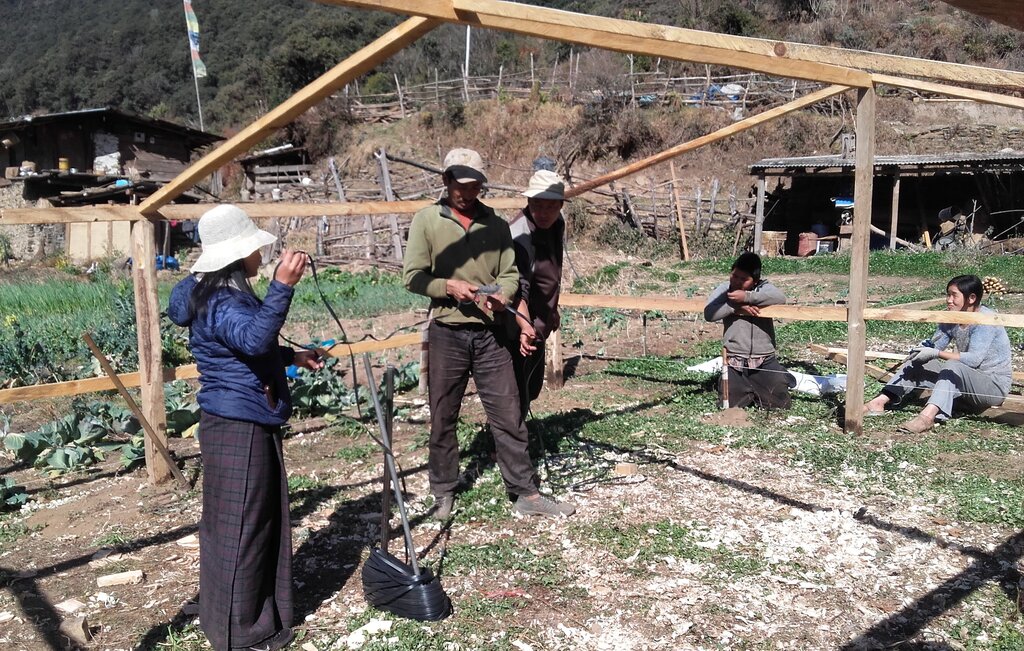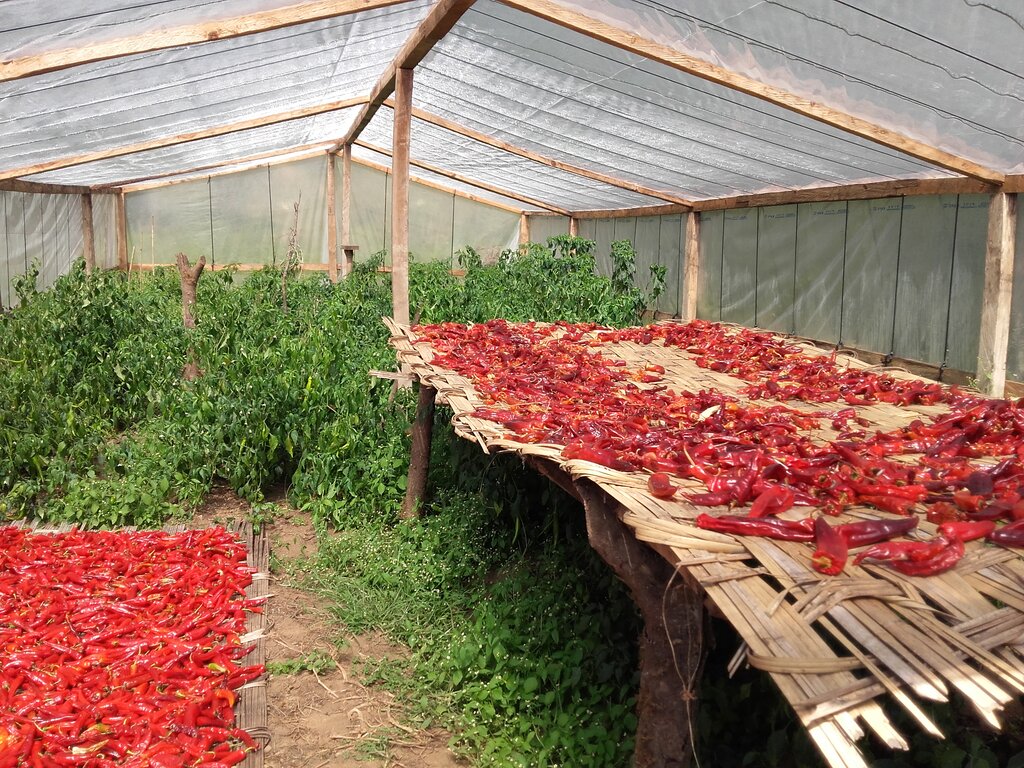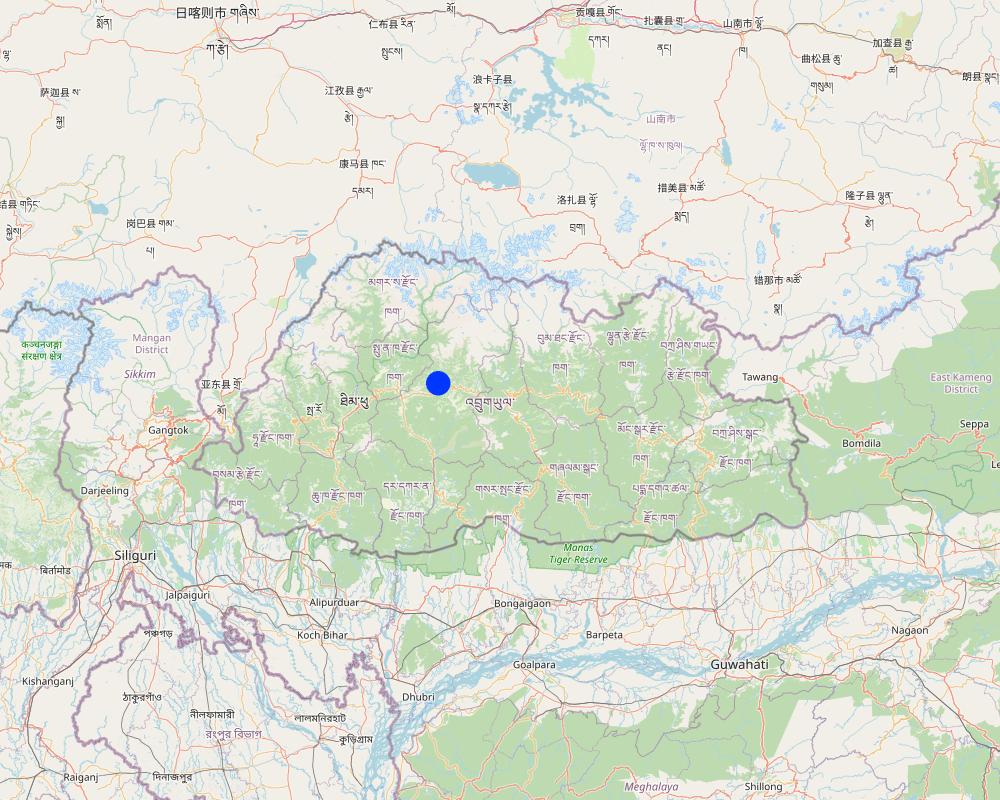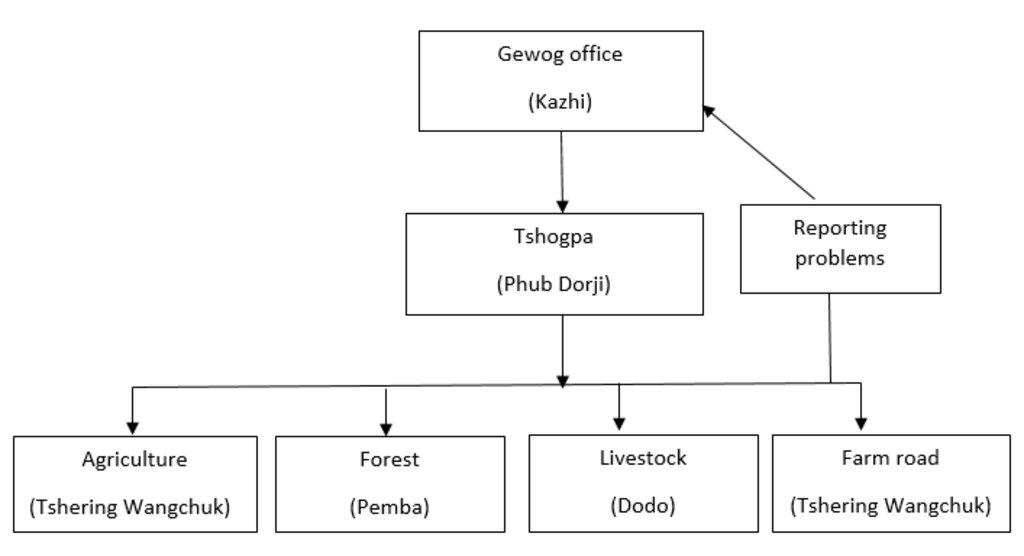Model Village Approach to Scale out Organic Agriculture [Бутан]
- Создание:
- Обновить:
- Составитель: Karma Wangdi
- Редактор: chenga Tshering
- Рецензенты: William Critchley, Rima Mekdaschi Studer, Joana Eichenberger
Petoen Gi Yue Ngoe Zin Baedhi Rangzhin Sanam Dharchhab Tangthab (དཔེ་སྟོན་གྱི་གཡུས་ངོས་འཛིན་འབད་འདི་རང་བཞིན་སོ་ནམ་དར་ཁྱབ་བཏང་ཐབས།)
approaches_6838 - Бутан
Просмотреть разделы
Развернуть все Свернуть все1. Общая информация
1.2 Контактные данные специалистов и организаций, участвующих в описании и оценке Подхода
Ответственный (-ые) специалист (-ы)
землепользователь:
Pemba
17738919
Lull Village, Lengbi Chiwog
Lull village, Lengbi Chiwog Community), Kazhi Gewog (Block), Wangduephodrang Dzongkhag (District)
Бутан
землепользователь:
Dorji Phub
77330501
Lull Village, Lengbi Chiwog, Kazhi Geog, Wangdue Phodrang
Lull Village, Lengbi Chiwog, Kazhi Gewog, Wangdue Phodrang.
Бутан
землепользователь:
Dodo
17473224
Lull Village, Lengbi Chiwog (Block), Kazhi Gewog (Block), Wangduephodrang Dzongkhag (District)
Lull Village, Lengbi Chiwog, Kazhi Gewog, Wangdue Phodrang.
Бутан
землепользователь:
Wangchuk Tshering
17160021
Lull Village, Lengbi Chiwog, Kazhi Gewog, Wangduephodrang
Lull Village, Lengbi Chiwog, Kazhi Gewog, Wangduephodrang.
землепользователь:
Wangchuk Tshering
17443965
Lull Village, Lengbi Chiwog, Kazhi Geog, Wangduephodrang
Lull Village, Lengbi Chiwog, Kazhi Gewog, Wangduephodrang.
Бутан
Название проекта, содействовавшего документированию/оценке Подхода (если применимо)
Strengthening national-level institutional and professional capacities of country Parties towards enhanced UNCCD monitoring and reporting – GEF 7 EA Umbrella II (GEF 7 UNCCD Enabling Activities_Umbrella II)Название организации (-ий), содействовавших документированию/оценке Подхода (если применимо)
National Soil Services Centre, Department of Agriculture, Ministry of Agriculture & Livestock (NSSC) - Бутан1.3 Условия, регламентирующие использование собранных ВОКАТ данных
Когда были собраны данные (на местах)?
10/07/2023
Составитель и ответственный/-ые специалист(-ы) согласны с условиями, регламентирующими использование собранных ВОКАТ данных:
Да
2. Описание Подхода УЗП
2.1 Краткое описание Подхода
Organic agriculture includes a variety of farming systems that advance the sustainable production of food and fibres, prioritizing human health, and environmental, social, and economic aspects. The main objective of the model village approach is to promote the commercialization of organic farm produce.
2.2 Подробное описание Подхода
Подробное описание Подхода:
Organic farming is a system of agricultural production based on the use of natural processes and resources. Organic farming is on the rise worldwide. Until 1961, when chemicals were introduced to Bhutanese farmers, Bhutan was 100% organic. There were no chemicals to buy and no chemicals to use. There were no genetically modified seeds to buy and no genetically modified seeds to use. Farmers were required to weed their field by hands instead of spraying butachlor, a powerful pesticide used in paddy fields. According to Dzongkhag agriculture officer (DAO), a farmer in Wangdue, said that organic agriculture is "what we used to do." Traditional farming methods in Bhutan are organic and the departure from that has been a recent movement. But young farmers who started after the introduction of chemicals cannot remember a time when chemicals were not a part of their farming practices. The increase in chemicals is a recent trend, and depending on which chemical is under consideration the trend has either stagnated or grown. According to the national organic program, the use of fertilizer has remained constant over the last thirty years. On the other hand, the use of synthetic herbicides has grown each year. The primary example of herbicides used are butachlor in rice paddy fields and metribeuzin in potatoes (Hokenson, 2014).
The Department of Agriculture in collaboration with Dzongkhag Agriculture Office and Gewog Administration identified Lull village, Lengbi Chiwog of Kazhi gewog as a "Model Organic Village" to improve the livelihoods of people through crop diversification and income generation. Lull village was identified as an organic village in 2018. The main objective of this approach is to promote the commercialization of organic farm produce through post-production and value addition (Dorji, 2022).
In 2013, 51-year-old Tashi Bidha was the only farmer in Lull, a village situated in the Kazhi gewog region, approximately 40 kilometers from Bajo, Wangdue. The village, comprising a mere eight households, was classified as one of the most isolated in the Wangdue region. Lull is presently the first prosperous organic village in Wangdue. This began in 2013 with the initiative of one individual to establish road connectivity. Phub Dorji, a native of Lull, remarked that the village lacked roads and electricity at the time.
The village's application for road connectivity was rejected in 2013 due to its failure to satisfy the minimum threshold of 20 households. Many were apprehensive when Phub Dorji suggested that they make their own road. Following some deliberation, however, six households reached a consensus. Six households contributed more than Nu.500,000 towards the repair of the 8.8 kilometers of road in Lull. Electricity arrived in the village months after the road was constructed. The community consented to transition to organic practices in 2017.
Wangdue’s agriculture extension stated the village received potato seeds, asparagus seedlings, bio-fertiliser, bio-pesticide and vermicomposting among others. The village has five polyhouses, and they have first-hand training in bio-pesticide preparation. They are now technically equipped. Lull previously cultivated wheat, barley, and chili. The village currently produces more than eleven different types of commodities and distributes its goods in Phuentsholing, Thimphu, Punakha, and Wangdue. Potatoes, garlic, and chili peppers are among the principal cash commodities of Lull. Presently, income generation has increased to Nu 770,000 since the transition to organic practices.
2.3 Фотографии, иллюстрирующие Подход
2.5 Страна/ регион/ место, где применялся Подход
Страна:
Бутан
Административная единица (Район/Область):
Wangdue phodrang
Более точная привязка места:
Kazhi, Lull village
Map
×2.6 Даты начала и окончания реализации Подхода
Если год начала реализации Подхода достоверно неизвестен, дайте примерную оценку:
менее 10 лет назад (недавняя)
2.7 Тип Подхода
- недавняя местная инициатива/ инновация
2.8 Каковы цели/ задачи Подхода
To improve the livelihoods of people by through crop diversification and income generation while promoting the commercialization of organic farming through post-production and value-addition for independency and self sufficiency.
2.9 Условия содействующие применению Технологии/ Технологий в рамках Подхода или затрудняющие его
Социальные/ культурные/ религиозные нормы и ценности
- содействуют
Able to conserve biodiversity and nature resources on farm and in the surrounding environment.
Наличие/ доступность финансовых ресурсов и услуг
- содействуют
Increasing income and reducing production cost
Сотрудничество/ координация действий
- содействуют
Integration of traditional knowledge, joint problem solving and farmer to farmer exchange can improve a community relations and lead to greater involvement and commitment of producers.
Программные документы/ руководящие установки
- содействуют
Organic farming policy will help to protect farming communities in the present global situations.
Осведомленность в области УЗП, доступность технической поддержки
- содействуют
Sustainable use of resources ultimately protecting lands and use of organic fertilizers improving soil fertility
- затрудняют
Less aware to the organic technical knowledge
Рынки (для приобретения материалов и услуг, продажи продукции) и цены
- затрудняют
Higher prices for the organic products leading to low consumer demands and no specific market outlet for organic production.
Объем работ, доступность рабочей силы
- затрудняют
Extensive labor as organic farm management requires intensive care and monitoring.
другие
- содействуют
Environment- Reduces environmental contamination risks and minimises the public health costs of pesticide poisonings, etc.
3. Участие и распределение ролей заинтересованных сторон
3.1 Заинтересованные стороны, участвующие в реализации Подхода и их роли
- местные землепользователи/ местные сообщества
Land users
To practice various methods of organic farming
- государственные власти (отвечающие за планирование или принятие решений)
National Centre for Organic Agriculture (NCOA)
Provide training on Organic farming practices, Local Organic Assurance Standard, facilitate farm input support, field inspections and certification.
Если участвовало несколько заинтересованных сторон, назовите ведущую организацию:
Dzongkhag Organic Focal Person, Extension Supervisor and Tshogpa.
3.2 Участие местных землепользователей/ местных сообществ на разных стадиях реализации Подхода
| Участие местных землепользователей/ местных сообществ | Перечислите участников и опишите их вовлеченность | |
|---|---|---|
| инициирование/ мотивация | самоорганизация | Lull, an abandoned village before 2013 due to its remote location, has witnessed a revival. Mr. Phub Dorji, the current Tshogpa of Lenbee chiwog from Lull village, has taken the initiative to construct the Lull farm road. He collected contributions for fuel and basic maintenance from beneficiaries, and the Dzongkhag Agriculture Office facilitated the deployment of a CMU Excavator. The construction of a 9.00 km farm road to Lull village was a collaborative effort, gradually connecting with the Dzongkhag and extending further to the National Centre for Organic Agriculture (NCOA). Thereafter, Lull village has been adopted as a "Model Organic Village". |
| планирование | внешняя поддержка | The Dzongkhag, Gewog, and NCOA have collectively formulated a plan in consultation with land users and submitted a funding request to GEF-LDCF. |
| выполнение | самоорганизация | NCOA, Dzongkhag Agriculture Office, Gewog Agriculture Office and Land Users. |
| мониторинг/ оценка | пассивное | The monitoring and evaluation as sited above were in team comprising of representative from NCOA, Dzongkhag and Gewog. Compilation of progress report and submission annually to NCOA, Dzongkhag and Gewog Administration. |
3.3 Схема реализации (если имеется)
3.4 Принятие решений по выбору Технологии/ Технологий УЗП
Укажите, кто принимал решение по выбору применяемой Технологии/ Технологий:
- все участники как часть процесса совместных действий
Поясните:
This approach involves participation of all the relevant stakeholders (Dzongkhag Agriculture Office, Gewog Administration, NCOA, Tshogpa and Land Users)
Поясните на чём было основано принятие решений:
- анализ подробно описанного опыта и знаний по УЗП (принятие решений на основе подтвержденных фактов)
4. Техническая поддержка, повышение компетенций и управление знаниями
4.1 Повышение компетенций/ обучение
Проводилось ли обучение землепользователей/ других заинтересованных лиц?
Да
Укажите, кто проходил обучение:
- землепользователи
Если существенно, укажите гендерный и возрастной состав, статус, этническую принадлежность и т.д.
Both female and male
Тип обучения:
- обмен опытом между фермерами
- опытные участки
- общие собрания
Рассматриваемые темы:
Land users were provided with wide range of training targeting towards organic farming practices. The training was provided on Low Cost Plastic House Construction, Soil fertility Management (Composting & Vermi Composting), Nursery raising & transplanting, Bio Pesticide preparation and application and Post Harvest Management practices focusing on target crops. Further they were also provided with study tour to ARDC Bajo to update on the latest technology targeting on Soil fertility and Bio Pesticide management besides Bio Char preparation.
4.2 Консультационные услуги
Есть ли у землепользователей возможность получать консультации?
Да
Укажите, где именно оказываются консультационные услуги:
- на полях землепользователей
- в постоянно функционирующих центрах
Описание/ комментарий:
Advisory services are provided from Gewog Agriculture Extension Supervisor/ Dzongkhag Organic Focal, ARDC Bajo, National Center for Organic Agriculture (NCOA).
4.3 Институциональная (организационная) поддержка
В ходе реализации Подхода были ли организованы новые институциональные структуры или поддержаны уже существующие?
- да, умеренно
Укажите уровень, на котором структуры были укреплены или вновь созданы:
- местные
- региональный
Опишите организацию, функции и ответственность, членство и т.д.
They are able to produce organic products for their self consumption and also able to supply to other institutions like schools and to the common vegetable markets.
Укажите тип поддержки:
- повышение компетенций/ обучение
- оборудование
- Seeds, Bio Fertilizers, Bio Pesticides/Fungicide, Low Cost & Prefabricated Plastic House, Electric Fencing Materials & Grass cutter.
Подробнее:
Land users were provided with inputs (Improved Seeds, Bio-Fertilizers, Bio-Pesticide and Fungicide) at the initial stage prior to the capacity building. After the training, the inputs that land users can afford were gradually lifted through timely consultation meetings. The crucial inputs that the land users can't afford were included in the plan - and they were supplied with electric fencing materials to mitigate crop depredation from wild pests followed by a grass cutter for timely weed management within and around the field.
4.4 Мониторинг и оценка
Являются ли мониторинг и оценка частью Подхода?
Да
Комментарии:
Monitoring and evaluation were done during the field visit to assess the physical progress by Extension Supervisor, Dzongkhag Agriculture Office & NCOA followed by consultation meetings where progress are reviewed and new plan were proposed. This progress and plan were finally submitted to NCOA, Dzongkhag Agriculture Office and Gewog Administration annually.
4.5 Научные исследования
Были ли научные исследования частью Подхода?
Нет
5. Финансирование и внешняя материальная поддержка
5.1 Годовой бюджет мероприятий по УЗП в рамках Подхода
Укажите годовой бюджет мероприятий УЗП в рамках Подхода в долларах США :
4000,00
Если точный годовой бюжет неизвестен, укажите примерный диапазон затрат:
- 10000-100000
Комментарий (например, основные источники финансирования/ ключевые доноры):
GEF-LCDF
5.2 Финансирование и внешняя материальная поддержка, предоставляемая землепользователям
Предоставлялась ли землепользователям финансовая/ материальная поддержка для применения Технологии /Технологий?
Да
Если да, укажите тип(-ы) поддержки, кто ее предоставил и условия предоставления:
Funding in the initial set up was provided by GCF-LCDF- which stands for Global Environment Facility-Least Developed Countries Fund
5.3 Субсидии на отдельные затраты (включая оплату труда)
- оборудование
| Укажите, какие ресурсы были субсидированы | В какой степени | Опишите субсидии подробнее |
|---|---|---|
| техника | профинансированы полностью | Rice milling machine and other processing machine |
| инвентарь/ инструменты | профинансированы частично | Green house |
| Electric fencing materials, Grass cutter | профинансированы полностью | |
Если труд землепользователя был существенным вкладом, укажите, был ли этот вклад:
- добровольный
Комментарии:
They are only six households and they carry out labor sharing without any incentives
5.4 Кредитование
Предоставлялись ли в рамках Подхода кредиты на мероприятия УЗП?
Нет
5.5 Другие методы или инструменты стимулирования
Использовались ли другие методы или инструменты стимулирования для продвижения Технологий УЗП?
Нет
6. Анализ влияния и заключительные положения
6.1 Влияние Подхода
Сумел ли Подход расширить возможности местных землепользователей, повысить участие заинтересованных сторон?
- Нет
- Да, немного
- Да, умеренно
- Да, существенно
Improved community relationship and led to greater involvement of the stakeholders and commitment of the producer
Сумел ли Подход дать возможность принимать решения на основе подтвержденных фактов?
- Нет
- Да, немного
- Да, умеренно
- Да, существенно
Land users proposal while planning has been improved from the initial. They can prioritize their needs towards strengthening organic farming.
Сумел ли Подход помочь землепользователям внедрить и поддерживать технологии УЗП?
- Нет
- Да, немного
- Да, умеренно
- Да, существенно
Organic farming practices improves sustainable use of resources ultimately resulting in conserving natural resources and increasing soil fertility
Сумел ли Подход улучшить согласованность действий и повысить рентабельность применения практик УЗП:
- Нет
- Да, немного
- Да, умеренно
- Да, существенно
Improved livelihoods through higher income generation and reduced production cost
Сумел ли Подход расширить знания и возможности землепользователей в применении практик УЗП?
- Нет
- Да, немного
- Да, умеренно
- Да, существенно
There is an exchange and learning platform among the stakeholders
Сумел ли Подход расширить знания и возможности других заинтересованных сторон?
- Нет
- Да, немного
- Да, умеренно
- Да, существенно
The approach involves a participatory decision making process.
Сумел ли Подход укрепить сотрудничество между заинтересоваными сторонами/ выстроить механизмы сотрудничества?
- Нет
- Да, немного
- Да, умеренно
- Да, существенно
The group is encouraging and influencing other local communities and has been learning site disseminated through television.
Сумел ли Подход снизить остроту конфликтов?
- Нет
- Да, немного
- Да, умеренно
- Да, существенно
Enhance team work, collaboration and cooperation among community and stake holders
Сумел ли Подход расширить возможности социально и экономически уязвимых групп?
- Нет
- Да, немного
- Да, умеренно
- Да, существенно
This approach helped financially unstable farmers to improve their livelihood
Сумел ли Подход содействать гендерному равенству и расширить права и возможности женщин и девочек?
- Нет
- Да, немного
- Да, умеренно
- Да, существенно
No gender bias
Сумел ли Подход стимулировать молодежь/ будущее поколение землепользователей заниматься УЗП?
- Нет
- Да, немного
- Да, умеренно
- Да, существенно
The evidence based learning through hands on training and study tour to ARDC Bajo has encouraged the young people currently in the community while those young students attending during the break and social influence are encouraging the young generations to take up the organic farming in the future.
Сумел ли Подход способствовать улучшению продовольственой безопасности/ качества питания?
- Нет
- Да, немного
- Да, умеренно
- Да, существенно
The approach of organic farming provided healthy production leading to improved food security and nutrition.
Сумел ли Подход расширить доступ к рынкам?
- Нет
- Да, немного
- Да, умеренно
- Да, существенно
No specific market outlet for un processed organic product especially fresh vegetables though follow up are being done by Dzongkhag with opening of Organic Market Outlet at Bajo Town.
Сумел ли Подход улучшить санитарные условия и доступ к водоснабжению?
- Нет
- Да, немного
- Да, умеренно
- Да, существенно
There is no usage of chemical fertilizers resulting in the reduction in pollution.
Сумел ли Подход привести к более эффективному использованию электроэнергии/ возобновляемых источников энергии?
- Нет
- Да, немного
- Да, умеренно
- Да, существенно
This approach is an integrated human, environment and sustainable agriculture production system while reducing external inputs like use of synthetic fertilizers and other harmful chemical pesticide.
Сумел ли Подход привести к созданию новых рабочих мест/ к расширению возможностей получения дохода?
- Нет
- Да, немного
- Да, умеренно
- Да, существенно
Young generations are being encouraged to adopt organic production systems
6.2 Основные причины, побуждающие землепользователей внедрять УЗП
- рост продуктивности
Optimum production
- рост прибыли (доходности) и рентабельности
Low cost of production with reasonable market price of the product.
- престиж, общественное давление/ солидарность
This approach has further improved their cohesion and interaction while every individuals support the responsibility taken by individual assigned.
This community has prestige that no community has. They have nomination of representatives within themself. Suppose for Agriculture, Tshogpa is representative of the group. So rest will provide full support for what ever activities the Tshogpa leads or directs the very reason for the success of Model Organic Village approach.
- экологическая сознательность
This approach reduces environmental contamination risks
- традиции и верования, нравственные ценности
This approach preserves old tradition and respects the local culture.
- приобретение знаний и опыта в области УЗП
It helps to maintain higher soil fertility and best use of local resources leading to proper land management
- улучшение эстетической привлекательности
It helps to conserve biological diversity and balance ecosystem.
- снижение остроты конфликтов
For small and poor farmers, organic farming can be an effective risk management tool that reduces input cost, diversifies production and improve local food security
6.3 Долгосрочная устойчивость мероприятий в рамках Подхода
Могут ли землепользователи самостоятельно (без внешней поддержки) продолжать применение того, что было реализовано в рамках Подхода?
- да
Если да, опишите как:
Organic production encourage long term commitment to maintain soil fertility, particularly addressing soil erosion, degradation and desertification and also reduce external energy consumption and reduce water use
6.4 Сильные стороны/ преимущества Подхода
| Сильные стороны/ преимущества/ возможности по мнению землепользователей |
|---|
| Low cost of investment and low external input use |
| Higher prices for organic products provide higher earning for producer involved in production, processing and trade hereby benefiting the small farmers |
| Сильные стороны/ преимущества/ возможности по мнению составителя или других ключевых специалистов |
|---|
| Provide awareness and knowledge among the producers about organic farming techniques |
| Increase international organic market and provide niche export market for Bhutanese farmers that can comply with organic standards |
| Provide a platform for business development in producing organic products and processing high value organic products(manufacturing) |
6.5 Слабые стороны/ недостатки Подхода и пути их преодоления
| Слабые стороны/ недостатки/ риски по мнению землепользователей | Возможные пути их преодоления/снижения? |
|---|---|
| Labor intensive | Mechanization |
| Lack of knowledge on organic production | Hands on training on organic production |
| Lack of specific market for organic production | Need support policies from high levels |
| Слабые стороны/ недостатки/ риски по мнению составителя или ответственных специалистов | Возможные пути их преодоления/снижения? |
|---|---|
| Certification is costly for small farmers and could be a serious barrier to access a market that will require certification in future. | Proper legal framework and policies for farmers with affordable price in future. |
| Limited awareness in the domestic market about nutritional, safety and quality of organic farm produce | More awareness in the market as well as consumers, |
7. Справочные материалы и ссылки
7.1 Методы сбора/источники информации
- выезды на места, полевые обследования
5
- опросы землепользователей
5
7.2 Ссылки на опубликованные материалы
Название, автор, год публикации, ISBN:
National framework for organic farming in Bhutan, Department of Agriculture, 2006
Где опубликовано? Стоимость?
website
Название, автор, год публикации, ISBN:
Model organic village prospering, Chenga Dorji, 2022
Где опубликовано? Стоимость?
website, BBS
7.3 Ссылки на материалы, доступные онлайн
Название/ описание:
Model organic village prospering, Model organic village in Lull chiwog under Kazhi gewog venturing into complete organic farm
Адрес в сети Интернет:
http://www.bbs.bt/news/?p=170622#:~:text=About%20five%20years%20after%20venturing,crop%20diversification%20and%20income%20generation.
Название/ описание:
National framework for organic farming in Bhutan
Адрес в сети Интернет:
https://www.fao.org/faolex/results/details/en/c/LEX-FAOC167577/#:~:text=Bhutan-,National%20Framework%20for%20Organic%20Farming%20in%20Bhutan%2C%202006.,rural%20communities%20%2D%20especially%20poor%20ones.
Ссылки и модули
Развернуть все Свернуть всеСсылки
Нет ссылок
Модули
Нет модулей


